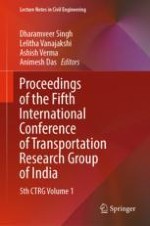2022 | OriginalPaper | Chapter
Analysis of Short-Term Ageing Mechanism of Pyro-oil Modified Bitumen Compared to VG30 Based on FTIR Spectroscopy
Authors : Hemantkumar P. Hadole, Mahadeo S. Ranadive
Published in: Proceedings of the Fifth International Conference of Transportation Research Group of India
Publisher: Springer Nature Singapore
Activate our intelligent search to find suitable subject content or patents.
Select sections of text to find matching patents with Artificial Intelligence. powered by
Select sections of text to find additional relevant content using AI-assisted search. powered by
